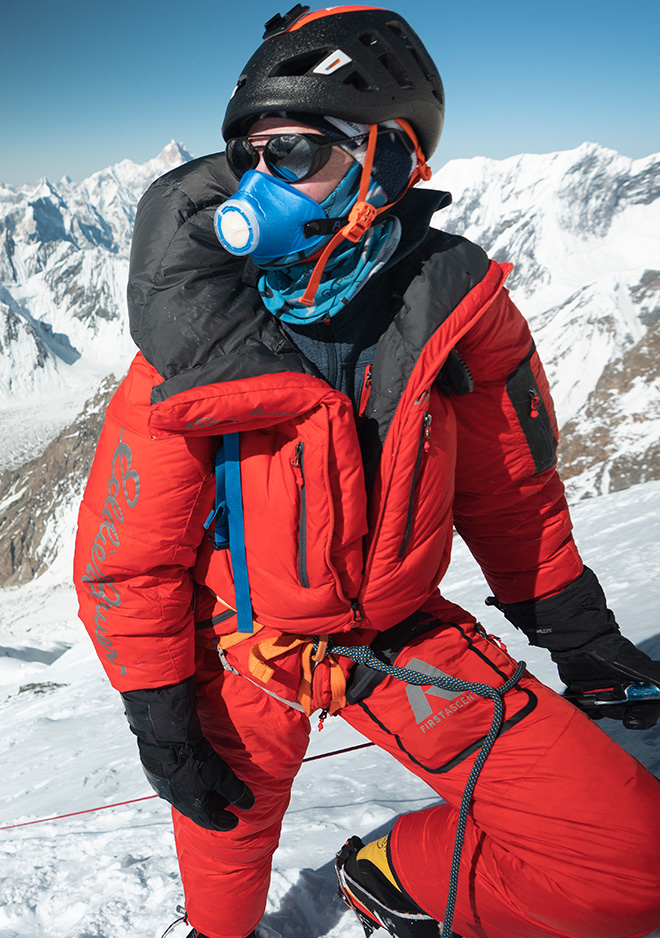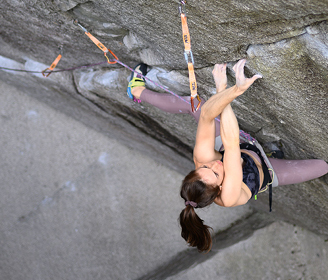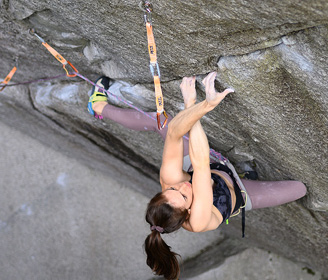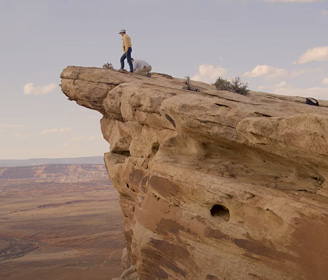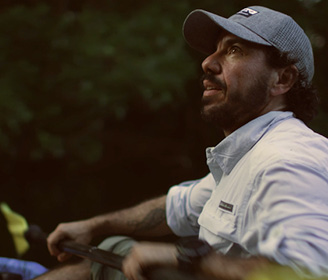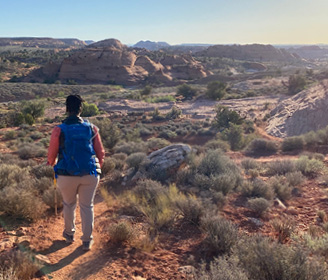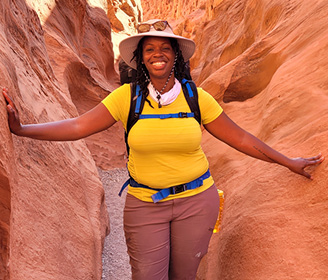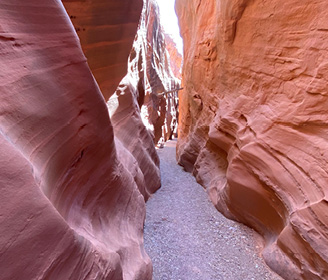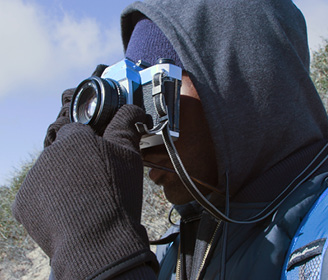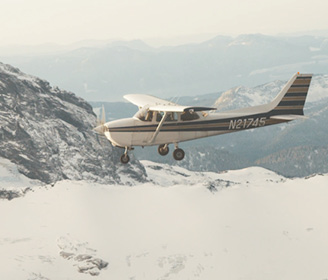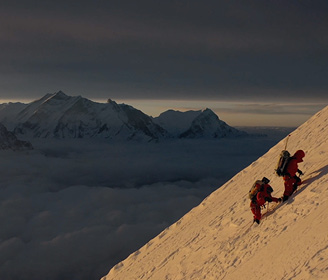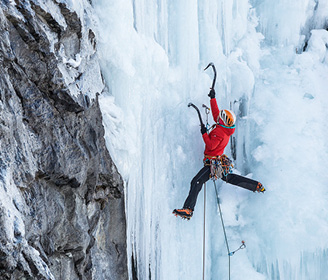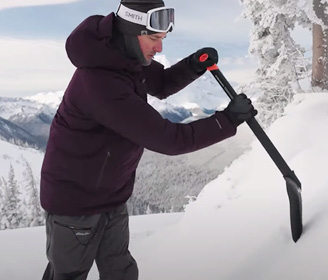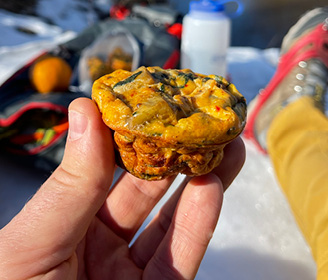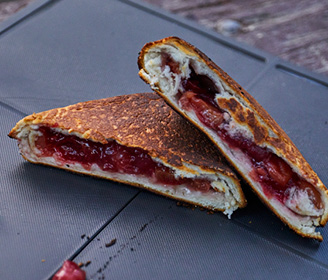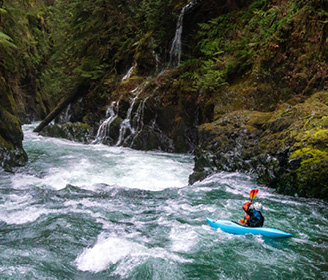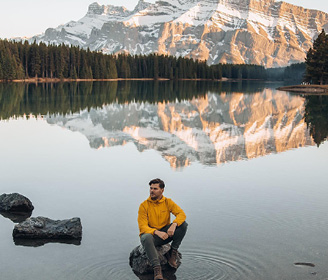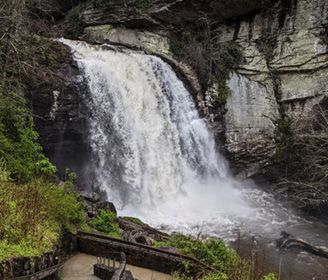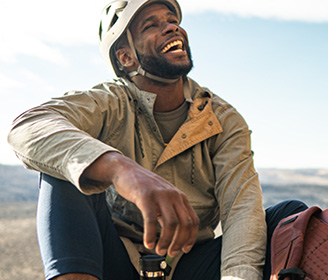Have you ever wondered, what is mountaineering? Not sure how to avoid altitude sickness or how to melt snow on a mountain? You’re not alone, and Eddie Bauer’s Alpine Guides Melissa Arnot Reid and Seth Waterfall are here to share facts with you and answer the internet’s most frequently asked questions about mountaineering.
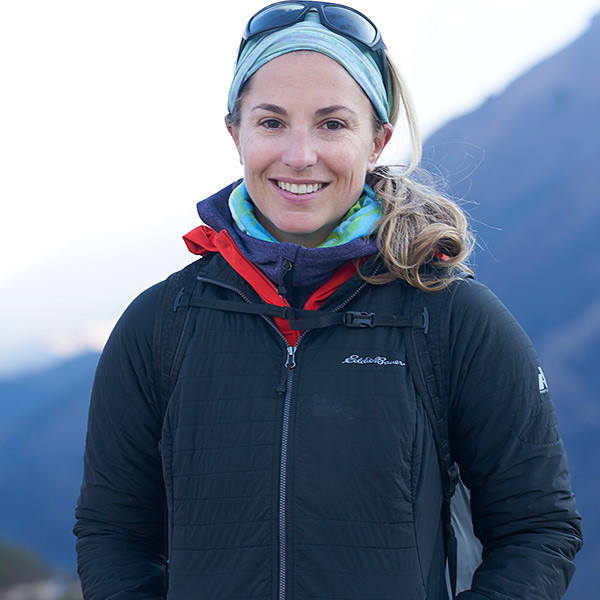
MELISSA ARNOT REID
Eddie Bauer Alpine Climbing Guide
High-altitude climber, fitness disciple, and high-camp peacemaker, Melissa Arnot holds the American women’s world record with 6 successful summits of Mt. Everest. She is the first American woman to summit Everest without supplemental oxygen. A professional mountain guide since 2004, she has guided on 4 continents, summited Mt. Rainier 109 times, and co-founded The Juniper Fund to support Sherpa families faced with climbing tragedies.
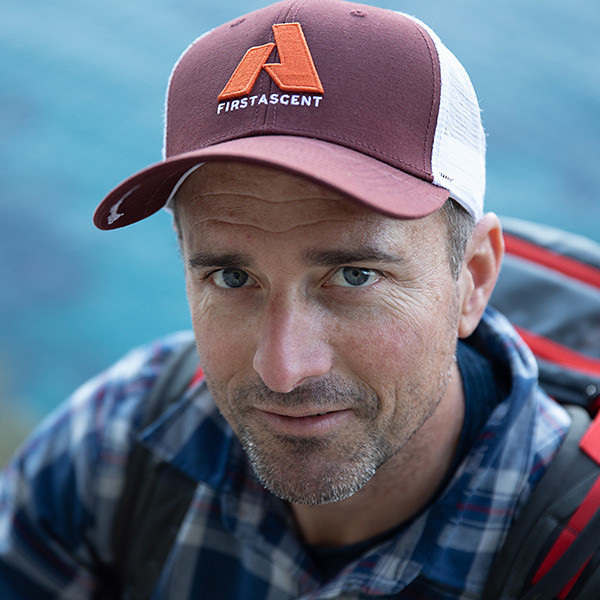
SETH WATERFALL
Eddie Bauer Alpine Climbing Guide
Growing up in Colorado and California, Waterfall took to the outdoors early on, due to the influence of his parents and grandparents. After earning a degree in Mathematics from the UC Santa Barbara, he followed the path less taken, earning his way up the mountain guide ranks with strong aerobic fitness and an unshakable demeanor.
- What is mountaineering?
- The standard line that I always give peoples is, it is slowly walking uphill while not feeling very good.
- Exactly. It’s nearing on a mountain.
- But in reality it’s just the art and science of how to climb large mountains.
- I think the differentiation between hiking and mountaineering is when you start to use mountaineering-specific tools and costumes. So, you have like crampon spikes on your feet or you’re using ice axes or there’s some ropes involved on technical train. That’s where it becomes mountaineering, for me.
- But if you find yourself slowly walking uphill and you’re not feeling very good–
- You’re probably mountaineering.
- That’s right.
- How do you train for mountaineering?
- I feel like I train for everything by trying to mimic the activity that I’m gonna be doing and, as Seth said, mountaineering is really just walking uphill slowly while not feeling very good, so I try to mimic that conditions by walking uphill in smaller zones, even in the gym on a step-mill or a local hill or like stadium steps, with a weighted pack. And that’s sort of just the physical-conditioning side of training for mountaineering.
- Yeah, if you’re in the gym looking crazy with a bunch of weight on a vest or in a backpack, you’re probably training for mountaineering in the most perfect way. It’s really hard to simulate–
- Yeah.
- Big mountains and other environments. So, getting practice, starting with smaller mountains and building your way up is a great way to train.
- And I think one of the most important parts of training for mountaineering is figuring out the difference between discomfort and danger. So, that requires making yourself feel really uncomfortable and getting intimate with what that feeling is so that you know where the difference is, where you start to not just be uncomfortable but things are maybe a dangerous time.
- Yeah. In that vein, if your first time in a big mountain also has a lot of other firsts along with it, first time with crampons, first time with big boots, first time with a harness, that maybe a little too much. So break it into small chunks and practice before you get to the real big mountains. Ooh!
- How should mountaineering boots fit?
- I think an easy way to answer this is they should not fit like your ski boots. A lot of people put on the mountaineering boot their first time and they think it should be stiff, tight, potentially a little bit uncomfortable. You’re gonna be spending a ton of time and you need the dexterity in your ankles and feet, so you want it to fit comfortable, pretty much right away. Technology of boots is really advanced beyond old-school leather boots that had a long break-in point. And if your boot doesn’t feel good just walking around the store, it’s probably not gonna start to feel good later on. So comfort, I think, is one of the biggest things.
- You bet.
- Yeah, and then, adjustability. Making sure that you can fit it with a thin sock for those warmer-days climbing and then a bigger sock on those cooler-days climbing and that there’s some adjustability inside that boot.
- Yeah. You don’t need to break boots in, too much anymore. That’s for old-school leather-type boots and the modern materials, yeah, they should just fit great right out the box. What’s the difference between mountaineering boots and hiking boots?
- You know, a lot of hiking boots can be used as mountaineering boots. There is often a part of the sole that allows us for a crampon to be snapped on to the boot. And that’s one of the biggest differentiators and then the overall stiffness and warmth of the boot.
- And I’m kind of a shoe-person and so I have a whole quiver of boots and it’s a spectrum. And so, I just have straight hiking-boots that are low top, almost like shoes, and I can hike fast in those. And then I have my 8000-meter boots that almost look like a ski boot with the giant gator on top of it. On the true mountaineering-boot, I wanna be able to kick into the snow and make a good footprint for myself, whereas a hiking boot, which is just gonna bounce around and deflect if I try and kick it into firm snow.
- Yeah. I think, especially if you have bigger feet, right? Cause my feet so small, all boots are kinda stiff in the sole but the bigger your foot, you’re gonna need the stiffer sole for a mountaineering boot.
- How are mountaineering climbs ranked?
- Oh! That’s a tough question.
- It is a tough question. Mountaineering is kind of an outside combination of a bunch of different types of climbing. So, sometimes, inside of a mountaineering route you’ll have rock climbing, you’ll have ice climbing, you’ll have glacier ice-climbing or you’ll just have a very long climb. So there’s a couple of different ways that you might see mountaineering ranked and graded. And there’s a grading system that Seth is gonna tell you all about.
- Yeah. Well, in north America, we do an alpine grade and then it’s also graded by the hardest individual moves of the climb. And without getting into it, cause you could drill way down into this subject, but alpine grade is Roman numeral one through six and that just encapsulates the totality of the difficulty. And from there, you break it down into the hardest rock-climbing moves and then we use the Yosemite Decimal System and that’s the five-scale, 5.0 through the hardest climb in the world, right now, 5.15 d, b, I don’t know. Um and ice climbing. You have to add that in, as well. So have a water ice or alpine ice, number-grade one through seven, as Caroline George, our teammate, is familiar with the water ice 7-grade. I am not familiar with the water ice 7-grade, but water ice five and six and then obviously lower ones, one, two, three, four. Or you go with the French-style awarded classification and–
- It goes from a little bit difficult, to very difficult. It’s French.
- Yeah. That night be a more logical way to do it, actually.
- Mm-hmm. I think just doing some research in depth about what you’re trying to climb and try to get as much info as you can, it can help you maybe more, even than the grading system.
- What food to take mountaineering?
- Food you like to eat. I feel like one of the biggest mistakes that I see my clients making is bringing really trendy, expensive, nutrition replacement-food into the mountains. Like, high-calorie bars and like complex-protein-carb situations and those things can be really good but they also can be a little tough to eat. And so, if you don’t love it at sea-level, you’re definitely not gonna love it when you’re working hard up-high. And so, my primary food of choice are high-nutrient foods that I actually just really like. So, I’m a little bit of a child in this way, I just like to have like a peanut butter and jelly sandwich, with me with a significant amount of peanut butter for some good protein. I have a major sweet-tooth, so a lot of quick, fast sugars that I know I’m gonna be burning off easily, like gummy bears or simple candy stuff like that.
- I say mix it up. Yeah, have a variety. If you bring seven of the same bar and I’m just gonna eat two in the morning three in the middle of the day and two more at night, that’s not gonna work for much more than the first day. So mix it up, have a variety, sweet, salty, science-type food is what they call your bars and gels and that kind of thing and some real food too, some sandwiches. And a good-old PB&J never sounds bad to me.
- And what food do we eat mountaineering, the food that we cook? We generally have dehydrated food that’s really light-weight and easy to rehydrate. So, you can uses like rices an potatoes and things that dehydrate down to super-small and light and rehydrate quickly with just hot water.
- How do you poo mountaineering?
- The same way you poo when you’re not mountaineering. You just need to be a little more careful with what you do with said poo, when you’re done.
- Mm-hm. Yeah. We use leave-no-trace practices in the mountains so, if you don’t have access to park or forestland-managed pit-toilets for your human waste the you can carry bags that are specifically designed to carry out human waste and sort of keep it away from all the rest of your stuff. Or if you’re in lower-land areas, there’s other ways to actually manage human waste. But, I think, definitely knowing what you’re gonna do, having a plan for that. But going poo when you’re mountaineering is just the same as any other time and exactly like any other time, nobody else wants to watch you poo so don’t stress yourself out about it, everyone else si kinda doing their own thing.
- Yeah, most people, that fascination, is long since receded in their life. So, just do your business, get it done with and try not to make a mess.
- How dangerous is mountaineering?
- It depends.
- Yeah. I think one of the most common answers to any question you have about mountaineering is, “It depends.”
- Yeah.
- It’s like there’s two things, objective danger and subjective danger. In the environment you’re climbing in, is there a rock-fall, is there ice-fall, is it really steep, is there a fast-moving weather systems that you can’t control them? And then there’s your own abilities. And so, you can make any climb very dangerous and potentially, with skill and training, you can make a lot of climbs really safe, except for that objective hazard. So it varies a ton depending on where you’re climbing.
- Less dangerous than speeding on the highway.
- I think less dangerous, statistically speaking, than wingsuiting.
- Yeah, wingsuiting is pretty dangerous, too.
- How to prevent altitude sickness, mountaineering?
- Well, altitude sickness is something that happens physiologically and there’s no sort of ringer of predisposition. It’s not like your fitness predicates whether you get altitude sickness. So anybody can get altitude sickness, even people who haven’t had it previously. And I think one of the best ways to prevent altitude sickness when you’re mountaineering is to ascend slowly. And our sort of golden rule is to not increase your sleeping elevation by more than 3000 feet per night. So you can climb up higher in the daytime and let your body start to do all the things physiologically that help you adjust altitude, but then you go back and sleep down at a lower elevation and slowly move up and incorporate a lot of rest days to allow your body to catch up.
- Yeah. Stress your body a little, come down and rest, let it adapt. Well, basically what you end up doing on the larger mountains in the world, is finding elevation where you don’t feel good, stay there until you feel good and then go to another one where you don’t feel good. So, you’re always feeling not so good.
- How many liters of water a day for high-altitude mountaineering?
- This is a good question. It depends, like most answers to mountaineering, on your output and your own efficiency and sort of what you’re doing. But it is important to be replacing what you’re putting out and one of the things that you don’t realize when you’re mountaineering, is often times it’s cold and so you feel like, “Oh, I’m not losing much body moisture cause I’m not sweating.” But you’re breathing quite hard and you’re probably losing more moisture to respiration than you would normally for a perspiration. So, at a minimum, kinda no matter where I am, what the day is, I have a minimum of two liters of water while moving throughout the day and then in the mornings and evenings drinking a little bit more. But sometimes that’s just not practical. You can’t melt snow or there’s not water sources so you have to figure out how to teach your body to actually conserve the moisture that you’re putting in, the water that you’re putting in throughout the day. But, I think, as a good rule of thumb, I try never to go out on a long day without at least one or two liters of water that I can have with me or get along the way.
- Yeah, I’m the same. Yeah. Two liters. Any more than that, carry it on your person, you might as well just pack a stove and melt along the way. But, um, mountaineering does require some difficulty, not just in the act of climbing, but just in living in the mountains and sometimes you might be a a little thirsty at the end of the day.
- Yeah. Gotta balance out. The more you carry the slower you’re gonna go, the longer you’re gonna be out there. So, figuring out what’s the magic equation. That’s a lot of math.
- How to attach crampons to a mountaineering pack?
- Strap them on.
- Yeah. Couple of different ways that you can do that, but I think, no matter how you actually attach the crampons to your pack, you know, the crampons are the spiky things that you attach to your feet for friction when you’re climbing on ice and glacier snow. But if you store them with the spikes of the crampons against one another, that actually protects a lot of the sharpness of the crampon spikes so they’re not as likely to penetrate through your stuff. And then I just put them on the outside of my pack or right on the inside top, but I generally try to keep them away from really permeable, puncturable surfaces like my down jacket. And that’s all the care I use. I don’t use a crampon bag or anything like that. I usually have them sticking on the outside of my pack with he spikes or the tines facing each other.
- And I take an inflatable mattress I use for sleeping and I roll my crampons up inside that. No, I don’t do that! That would be crazy. Who does that? So, yeah. Just like Melissa, I put them spike top spike and then I wrap the straps around it really tight and then I thread the straps through their retention rings and tighten those and then tuck the little straps in and then I put them on the outside of my pack where they’re not gonna damage fragile things like my sleeping pack.
- Mm-hmm. General rule, just keep your show tight. Try to have everything orderly neat and looking tight.
- What is the death zone in mountaineering?
- So, the death zone is any elevation above 26,000 feet and it is called “the death zone” because our bodies, physiologically, cannot survive a prolonged period of time without supplemental oxygen or interventions like drugs, at that altitude. So, it’s not called “the death zone” cause a bunch of people die up there, but it’s called “the death zone” cause our bodies actually, physiologically, are gonna start to wilt at that very high elevation.
- You bet. Cellular mitosis does not occur anymore. So cuts won’t heal and things like that. So, yeah, you body is not able to regenerate tissue or heal itself, you need to descend eventually.
- The borrowdest of borrowed time.
- Totally.
- What do you wear for mountaineering?
- Well, there’s a huge range of this depending on what the elevations and the temperatures that you’re gonna experience, but I kinda call it my “mountaineering costume” and my costume involves a lot of layering. So, I like to start out with either a wool or synthetic base layer that’s gonna be a long sleeve so I can protect all the surfaces of my body and keep myself warm. And then I layer on top that with wind and other weather protection items and pants, fleece, down, synthetic insulation, options just for changing environments. When you’re mountaineering either you can expect that you’re typically out for a long time in the day and so you’re maybe gonna see sunrise and sunset and you’re gonna have a huge temperature range and possible a lot of weather in those different environments. So, it’s not so much about what you wear, exactly, but what you can wear and what you’re carrying with you.
- Yeah, I think most people are surprised by how hot you can get even when it’s really cold. So, protecting yourself from the sun is paramount. I like a thin base layers with hoods and face masks and light gloves to protect the back of my hands. I tend to get overheated during the day and then cold at night, so what I have is like a linear system, very similar to what Melissa was describing and as I get colder and colder I just add more layers and then when sun comes up and I start to heat up then I just start dropping them and putting them in my pack in order, so it’s all nice and efficient.
- Yeah. I think, maybe Seth is the same on this. In almost every case that I’m gonna be mountaineering, my average is that I have three bottom layers and five-ish top layers and then, at least two pairs of gloves. And that gives me enough options to work with the whole temperature range.
- Yeah. A wide variety of temperature range is to be expected so you gotta plan for being too hot and being too cold.
- What types of ropes are used for mountaineering?
- Though there’s two basic types of rope, you have what used to call static ropes or now, more appropriately, low-stretch ropes. And then you have a dynamic rope that’s specific to climbing. And so, dynamic ropes can act like a bungee cord, if you’re lead climbing and you may fall, you’re placing intermediate protection along the way, you’re gonna fall past that before the rope catches you and you want that rope to stretch and absorb the shock. But if you’re gonna hang ropes, fix them on a mountain and climb up and down repeatedly while you’re acclimatizing then you want ones that don’t stretch as much when you pull. And for rescues, it’s nice to have ropes that don’t stretch.
- How to stay clean mountaineering?
- This is not a regular question for me cause I’m kinda just generally a dirtbag in my life. But one of the things I like because I’m kind of a dirtbag in my life is that mountaineering is a little bit of a clean sport. We’re not typically in low-land dirty areas, at the higher elevations when you’re on ice and snow, it’s not like you’re getting dirty from the atmosphere, you’re just getting dirty from sweating and keeping your body’s normal functions of movement. And I use a bird-bath system with just baby wipes as my intermediate cleaning in between bowl-showers, if I’m out in a place where I can’t have access to running water, I can’t rinse myself off, I’ll do the baby wipes every day, at least once a day, and then I’ll do a formal, proper bowl-shower once very week or two.
- Yeah, heat up some water, have a wash cloth and some soap and that’ll change your whole outlook on on life, actually. But yeah, after yeah, a week or two, you start to develop a nice sheen an you kinda roll with it after that.
- It’s a fine art of baby powder, sun screen, baby wipes. Then, repeat.
- And having your own tent at base camp, is nice, so you don’t offend your tent mates.
- Or you just make sure that you could climb with people who are hard to offend.
- How to set a pace mountaineering?
- Great question. Yeah.
- So hard.
- Yeah. I start out my day and just try and think about a pace that I will be able to sustain for the rest of the day. So if I feel like my heart rate is spiking up and down I use the analogy, I start every day with a matchbook and I wanna keep as many matches unburned as possible. And so, every time I climb a steep, little step and my heart rate spikes up and I start to sweat and breathe really hard, that’s a match. And I don’t wanna burn all those out by the end of the day.
- Yeah, exactly. I think people are often surprised that when you’re climbing with people who do this professionally, we tend to actually go pretty slow. It’s a sustainable pace and it’s all about efficiency. You never wanna redline when you’re at altitude, you never wanna be panting, breathing hard cause physiologically, that just does some tough things to your body that make it hard to recover and have your day. And I always, just like Seth, I always plan to be out for twice the amount of time I think I’m gone. So I need to have that energy reserve and that requires going kinda slow and efficiently and steady and being a bit of a tortoise.
- Yeah. The tortoise wins in mountaineering.
- Why are glacier sunglasses needed for high-altitude mountaineering?
- Well, your eye protection is so important when you’re doing high-altitude mountaineering because one, you’re getting closer to sort of our general solar spot, the sun and those UV rays are getting more and more intense the higher you go. And then, typically, you also have glaciers where they’re reflecting a ton of UV into your face and it’s really easy to damage your eyes and sunburn can lead to snow blindness on your eyes and be super painful and dangerous.
- People that have lighter colored eyes tend to suffer a little bit more, but if you go high enough and the sun’s bright enough then everybody can become snow blind and it’s basically, yeah, sunburning the inside of your eyes. It’s definitely painful and definitely bad for you. You only get one set of eyes, so wear sunglasses and shield as much of your eye as you can, from the sun.
- How does hydration keep you warm when mountaineering?
- When you become dehydrated, your blood vessels essentially constrict and your body’s not able to perfuse blood through, yeah, the rest of your body, out to your extremities. Dehydration just saps your strength and makes it harder for you to stay warm just because you can’t get adequate blood flow.
- What terrain do you use an ax while mountaineering?
- Well, I find that when I’m mountaineering I have a nice ax with me or I’m carrying a nice ax in my hand if I’m on a steep glacier ice or water ice where I need to have a third point of contact and my hand won’t do. And so, anytime where I think I might be in contacting ice, I typically have an ice ax with me. And that can be glacier ice or water ice.
- The standard configuration for an ax is to use it like a cane so anywhere you feel like a slip and fall will result in injury or you’re just having trouble maintaining your footing, then that’s when you need the ax.
- How to properly melt ice when mountaineering?
- Oh, this is a good question. So, one of the things that I find is really key for actually melting snow to make water when you’re mountaineering, is to start out with a little bit of water in the pot. When you are gonna get into camp, you need to make sure you have just a little splash for the bottom of the pot cause, this sounds really weird, but you can just burn water you can burn that ice in the bottom of the pot and it just starts kinda turning to vapor and it’s hard to make water then. So, I usually start with just a little bit of water in the bottom of the pot, fill up my pot all the way with snow and I like to use really dense snow cause it typically has more moisture in it, if I can find it. Pack it in and then as soon as that starts to melt down and become water, just keep adding in until you can tell that your pot’s gonna be full when all of the ice has melted. And then, having containers ready to transfer that. But, I mean, basically when we’re doing some of these climbs you become professional water-makers. Seems so silly, but you spend a huge amount of your time just making water.
- Yeah. And the longer climbs that are more remote, like Denali is a great example, when you’re carrying all the fuel in your team and you’re not gonna get any more, melting the water just so is right past the freezing point and then filling up your water bottles. Yeah, cold water is a little rougher to drink than nice, perfect room temperature water, but you’ll save a lot of fuel in the long run by, yeah, just getting to like 32.1 degrees Fahrenheit and then putting that in water bottle.
- What is self-arrest when mountaineering?
- It’s the act of using your ice-ax or whatever tools you have available, to stop a fall. So if you slip and fall while mountaineering and you’re sliding down slope, you need to stop that immediately because no matter what’s below you, you probably don’t wanna go there. And, yeah, there’s techniques that are, some are better than others, but basically you’re trying to stop yourself as soon as possible, from having a total disaster.
- Essentially making your body into an anchor so you can just stop and hold everything.
- You don’t wanna be… Have the first time you ever try that be when it really counts. So, practice, practice, practice.
- How many lumen headlamp for mountaineering?
- The most?
- Lots of lumens of headlamp?
- But not too much so that it’s too heavy.
- I think your amount of lumens that you’re using for your headlamp matter when you’re mountaineering. It’s actually people, I think, think they need a brighter headlamp than often times they need. If you keep in mind, when you’re climbing on snow and ice, the reflection of the light on the white actually kinda doubles the brightness of your headlamp. So, you don’t need necessarily the brightest one if you’re gonna be on snow and ice but you do definitely need new batteries in your headlamp when you’re gonna go mountaineering. That a way bigger issue than the lumens, for people, is headlamps dying cause they’re getting cold or you’re getting high altitude and getting dimmer and dimmer.
- I think now you can get nice headlamps that are fairly lightweight that have up to 1800 lumens and that’s extremely bright. And I like the brighter the better. But, yeah, you just don’t want it to be so heavy that it’s gonna make your neck stiff and hard to wear your clothes and stuff, so…
- How old is too old for mountaineering?
- No such thing. Mountaineering is, for me, one of my favorite activities in sports because it’s something that you can pick up really young and it’s something that can do for all of your life and you can just adjust your playground to your own abilities.
- Yeah. Pick your own goal for a mountain and, yeah, no matter your age, you can always find a mountain that’s suitable.
- I have a lot of clients that started mountaineering in their 50s.
- Oh, yes.
- And still well into their 70s. Mountaineering, when you look at it through the lens of all there is to know, it can seem pretty intimidating and maybe like it’s not that much fun. But once you get out there, I think it’s, really, a wonderful experience to challenge yourself with nature and something that, really, almost anybody can experience.
- Yeah. There’s a pretty easy barrier to entry to the sport and it’s really easy to get involved no matter where you are in the continent and it’s also a great way to experience the world. If you want to see other cultures, see how mountain people live around the world, that’s a great reason to travel and see how other people live.

